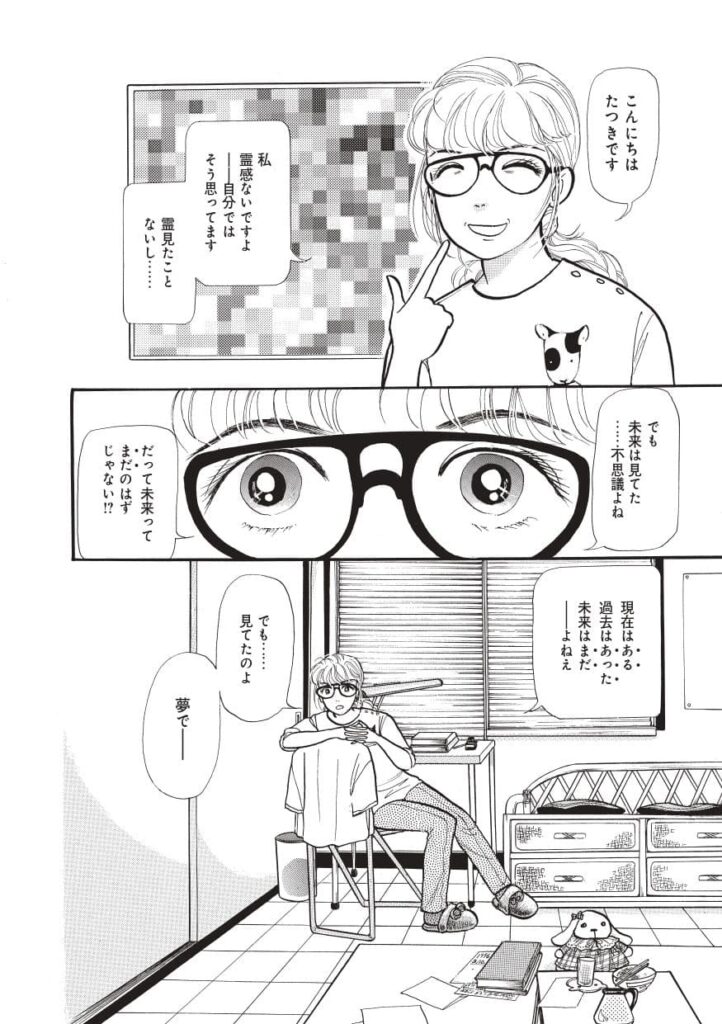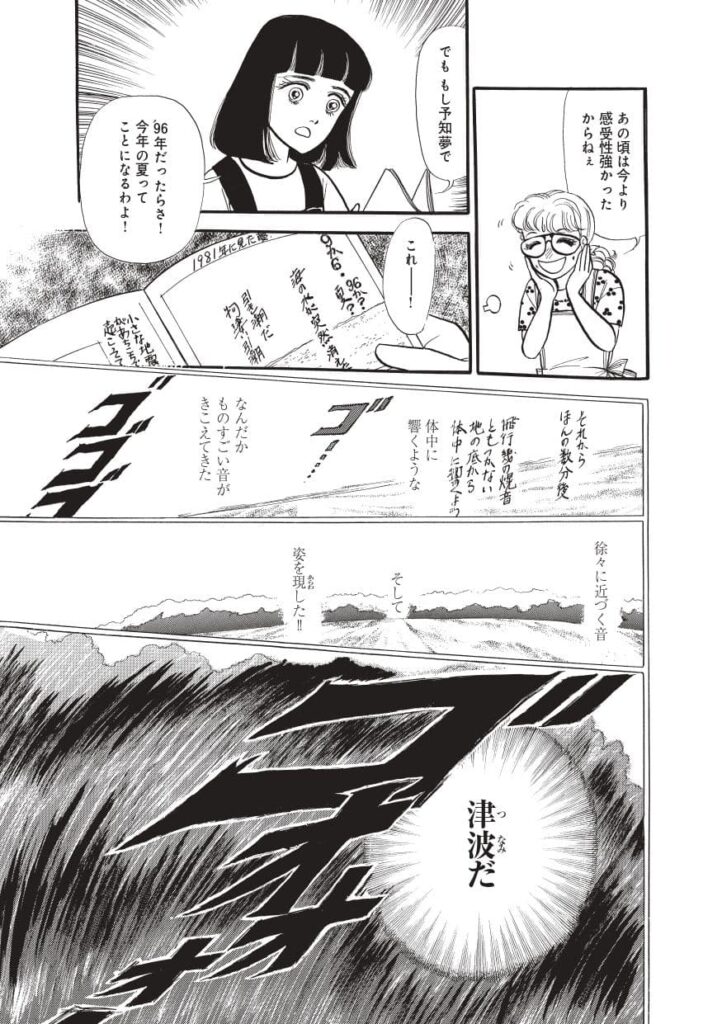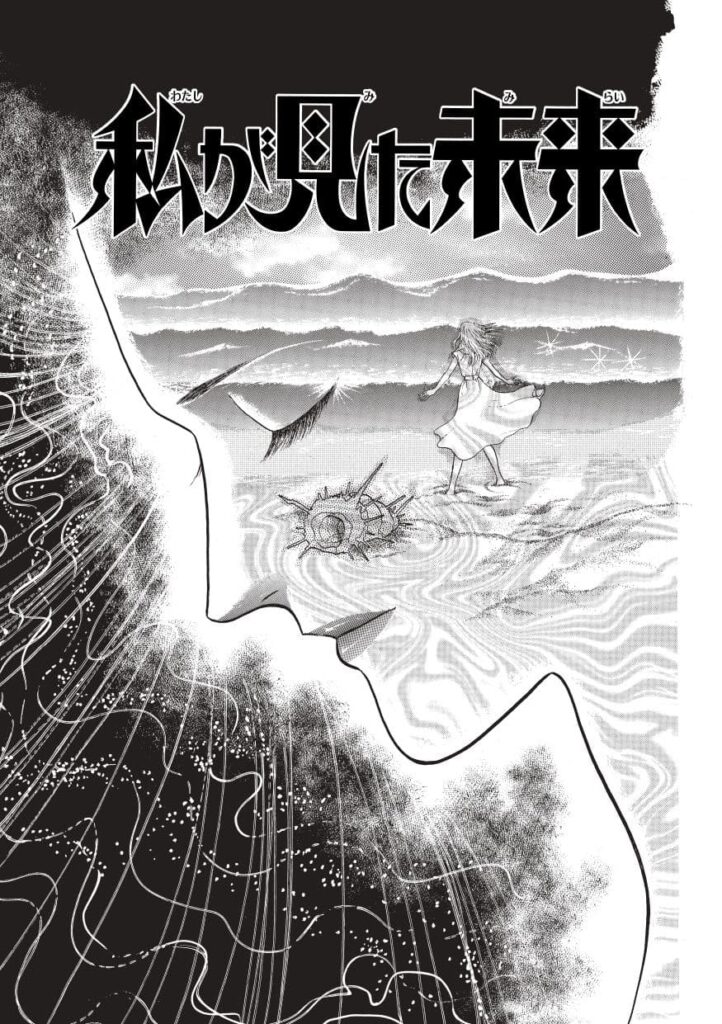It may seem inconceivable that a catastrophic event could befall Japan this weekend, a nation ever vigilant against nature’s unpredictable fury. Yet, the enigmatic prophecy of mangaka Ryo Tatsuki has resurfaced, capturing public attention and stirring debate: in her landmark collection The Future I Saw (1999), Tatsuki foretold “the great disaster… in March 2011,” words that chillingly prefaced the Tōhoku earthquake, tsunami, and ensuing Fukushima Daiichi nuclear crisis. Now, in her 2021 Complete Edition, she tentatively sets her next portentous vision for July 5, 2025.
In this article, we will:
- Examine Tatsuki’s unique creative practice and prophetic track record.
- Trace the evolution of The Future I Saw from its original publication to the Complete Edition.
- Analyze the potential social and economic impacts of the July 2025 prediction.
- Weigh scientific perspectives and official warnings against apocalyptic fears.
- Reflect on the lasting lesson: preparedness over panic.
1. The Woman Behind the Prophecy: Who Is Ryo Tatsuki?
Ryo Tatsuki (辰己涼), born December 2, 1954, in Kanagawa Prefecture, debuted as a manga artist at age 20 with the one-shot Go Hiromi Monogatari in Monthly Princess (1975). Over two decades, she published horror series and supernatural-themed works, including Doll Story, before retiring in 1999 at age 44.
What sets Tatsuki apart is her lifelong practice of dream journaling. Beginning in the late 1970s, she recorded vivid dreams—both in text and illustration—in notebooks later titled Dream Records.
By the mid-1980s, this practice evolved into a full-fledged creative method: Tatsuki would transpose dream imagery directly into manga narratives, birthing what fans call her “prophetic manga.”
In the early 1990s, magazines ceased using furigana for adult readers, prompting her to adopt the pen name “Ryo Tatsuki” more consistently. Despite her retirement in 1999, her legacy endured through The Future I Saw and its legacy as a cultural phenomenon.



2. The Future I Saw (1999): The First Vision
Published in July 1999 by Asahi Sonorama, Watashi wa Mita Mirai (The Future I Saw) collected several of Tatsuki’s dream-inspired one-shots from 1994 to 1998. Its most sensational feature was the cover’s bold claim: “The Great Disaster Will Occur in March 2011.”
No such explicit prophecy appeared within the manga’s panels; rather, it was one of six annotated excerpts from her dream diary printed on the dust jacket. Five of these random dreams—ranging from Mount Fuji erupting to abstract, surreal imagery—never materialized. Yet, the March 2011 prediction proved eerily prescient:
- March 11, 2011: A magnitude 9.0 earthquake—the strongest ever recorded in Japan—strikes off the Tōhoku coast.
- Tsunami: Waves over 40 meters inundate towns, causing more than 18,000 deaths.
- Fukushima Daiichi Nuclear Disaster: Reactor meltdowns and radiation releases trigger mass evacuations and enduring health fears.
This unprecedented trifecta thrust Tatsuki into the spotlight. Out-of-print copies of The Future I Saw soared on the resale market, fetching prices from ¥100,000 to an astonishing ¥500,000. Meanwhile, a wave of impersonators and rumor-mongers emerged, muddying the waters around her true voice.
3. The Complete Edition (2021): Revisiting the Prophecies
In October 2021, Asuka Shinsha released The Future I Saw: Complete Edition, a reprint expanded with new commentary and clarifications from Tatsuki herself. Motivated by rampant impersonation and sensationalist media—false interviews in FRIDAY magazine and conspiracy-tinged articles in Mu—Tatsuki oversaw a careful revision that restored her authentic dream entries and provided crucial context.
3.1 Added Dream: The July 2025 Vision
Among the newly published dream records is the ominous description of a Philippine Sea eruption and ensuing mega-tsunami, described as:
“…the seabed, which seemed to be the epicenter, rising up with a bang… a tsunami three times the size of the Great East Japan Earthquake.”
In an afterword, Tatsuki tentatively assigns this vision to July 5, 2025, noting:
“If the day I had a dream came true, the day of the next major disaster will be July 5, 2025.”
3.2 Sales and Public Reception
- Sales: Over 400,000 copies sold within six weeks; over 560,000 total sales by mid-2022.
- Rankings: 6th place in first-half 2022 bestsellers (Nippon Shuppan Hanbai).
- Media Appearances: Featured on NHK’s Good Morning Japan (June 1, 2022) and countless talk shows.
By May 2025, total circulation—including digital editions—exceeded one million copies, attesting to Tatsuki’s enduring grip on public fascination.

4. Societal and Economic Ripples: Fear’s Tangible Fallout
Though a mega-tsunami remains a low-probability event, Tatsuki’s July 2025 prophecy has triggered palpable anxiety:
- Tourism Decline: Hong Kong and other Asian travelers are postponing or canceling trips to Japan, wary of headlines. Nomura Research Institute economist Takahide Kiuchi warns of an up to ¥560 billion shortfall in tourism revenue if apprehension persists.
- Flight Reductions: Regional airlines have trimmed services, citing lower bookings on Japan routes.
- Bestseller Frenzy: Competing editions of Tatsuki’s works—authentic and spurious alike—clutter bookstore shelves, fueling speculative investment in rare copies.
In local cafés and bars, overheard remarks suggest a nation on edge. Anecdotal reports describe customers asking baristas and bartenders: “Do you really think something will happen?” Even offhand musings on minor seismic tremors become charged with existential dread.
5. The Scientific Verdict: Between Data and Doubt
Leading seismologists and the Japan Meteorological Agency (JMA) have issued clear statements:
- Unpredictability of Earthquakes: Modern seismology cannot specify the exact date, time, magnitude, or epicenter of a quake in advance.
- Official Warning: At a June 2025 press briefing, JMA Director-General Ryuichi Nomura urged calm, emphasizing that no credible data points to a July 5 event.
Nonetheless, the JMA’s past “emergency warning” for a potential Nankai Trough earthquake—issued but untriggered—served a constructive role:
- Public Preparedness Boost: Households restocked disaster kits; local governments rehearsed evacuation drills; corporations audited business continuity plans.
While some critics denounce such warnings as alarmist, experts counter that false negatives—complacency during extended quiet periods—pose far greater risk than occasional false alarms.
6. Prophecy and Popular Culture: Myth, Media, and Mistrust
Tatsuki’s work sits at the intersection of folklore, pop culture, and digital rumor mill. Consider the following:
- Survivorship Bias: We recall Tatsuki’s accurate March 2011 note but forget the five unfulfilled predictions—Mount Fuji eruptions, etc.—printed alongside it.
- Meme Culture: Online forums and social platforms thrive on doomsday memes, infusing Tatsuki’s visions with horror-movie flair.
- Indie Film Tie-In: A micro-budget horror feature, 4:18 AM, July 5, 2025, has emerged—unaffiliated with Tatsuki or her publisher—dramatizing the prophecy with a cast including Yui Oguri (AKB48) and Satoshi Funagayama.
Such cultural artifacts blur lines between cautionary tale and sensationalist entertainment, feeding collective unease even as Tatsuki herself urges discernment.

7. Lessons in Preparedness: Beyond Prophetic Panics
Whether or not July 5, 2025, arrives with cataclysm, Tatsuki’s enduring legacy lies in one fundamental truth: Japan is earthquake country, and readiness must be perpetual.
7.1 Individual and Community Measures
- Disaster Kits: Water, nonperishable food, portable chargers, first-aid supplies—rotate and refresh every six months.
- Evacuation Plans: Confirm routes, designate meeting points, and download official alert apps (J-Alert, CDP) on smartphones.
- Neighborhood Networks: Join or form local “bosai” (disaster prevention) groups to share supplies and information.
7.2 Corporate and Governmental Roles
- Business Continuity Plans: Regularly audit IT redundancies, alternate work sites, and supply-chain vulnerabilities.
- Public Education: Schools and municipalities must keep drills frequent and engaging to avoid complacency.
- Infrastructure Investment: Reinforce seawalls, upgrade early-warning systems, and fund research on submarine volcanic activity.
Preparedness is not pessimism—it is prudence.
Conclusion: Prophecy, Precaution, and the Path Forward
Ryo Tatsuki’s dream-infused manga occupies a singular place in Japan’s cultural narrative: both an uncanny chronicle of past tragedy and a provocative prompt toward future vigilance. Her 2025 prophecy may prove a false alarm—or, in the capricious currents of nature, it could precede a watershed moment. Yet, prophecy or coincidence, the import remains unchanged:
Live each day with readiness in your mind—lest the next tremor shift your world in an instant.
So, as July 5 draws near, to our readers in Japan, let us honor Tatsuki’s message not with fear, but with forethought:
- Keep your disaster kit up to date.
- Review your evacuation plan with family and friends.
- Trust in expert guidance, not hearsay.
In a land defined by resilience and reinvention, Japan’s greatest defense lies in its preparedness. After all, while we cannot command the earth’s shifting plates, we can choose to meet them with resolve and resourcefulness.



